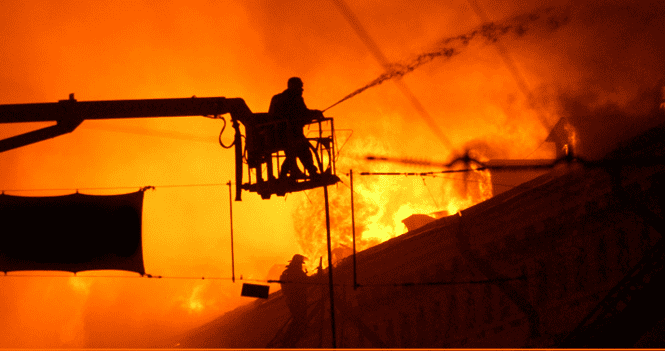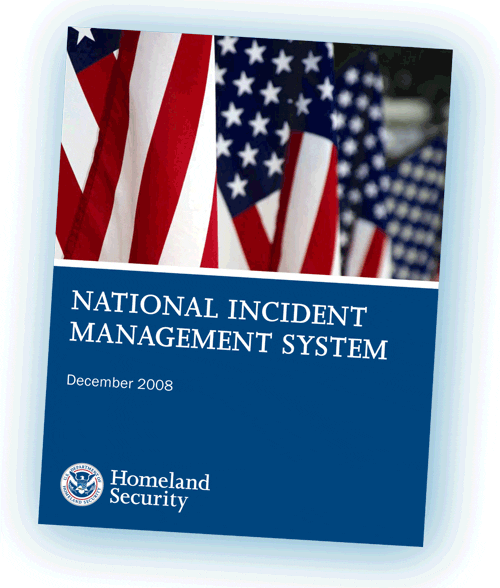In response to an ASIS Group discussion, I put together some thoughts about what I thought was a very good Motto:
In today’s complex and sometimes bewildering world we see an endless array of clever and thought- provoking expressions of end-game goals and aspirations for organizations.  Achieving these lofty goals takes more than setting them in print. Effective mottos provide a framework around which organizations build their future. The Hospital Fire Marshals’ Association (HFMA) has such a motto, “SO THAT LIVES SAVED BY SCIENCE AND SKILL MAY NOT BE LOST-BY FIRE.â€
 Hospital fire related fatalities and injuries have been rare over the last two decades. More importantly, responses to these incidents reflect a level of physical readiness unequaled by any other elements of the “Environment of Care.â€
Hospital fire related fatalities and injuries have been rare over the last two decades. More importantly, responses to these incidents reflect a level of physical readiness unequaled by any other elements of the “Environment of Care.â€
The Science dimension of Life-Safety Code development has been largely a function of the active participation of hospital fire marshals’ “on the field and not in the bleachers†time, energy and effort.
The Skill dimension bears witness to proactive leadership and dedication of hospital fire marshal professionals. There is little question of “who is in charge†when it comes to facility life safety issues.
We see a need for similar attention to be given to an often neglected area of the Environment of Care, specifically in the area of Emergency Management. If healthcare organizations could capture the traditional fire marshals’ zeal in the pursuit of all-hazards readiness, the prospects for healthcare organizations to meet their roles and responsibilities envisioned by the National Response Framework (NRF) would be well served.
The requirement for hospitals to be prepared for and respond to natural disasters has been “on the books†since the early Hill-Burton days. Readiness was not an adjunct to other concerns; it was an important day–to-day activity, an integral part of the mission. The chaotic response to Katrina, in general, and New Orleans, in particular, shocked the nation and bears witness to a collective weakness at all levels in effective disaster planning and response.
 The Healthcare Industry was notified by the DHS on May 26, 2006, that they were expected to become compliant with a set of activities which would facilitate their integration into the National Incident Management System (NIMS). These activities would be phased in over the next two years; compliance with the first set of activities would be expected by September 30, 2007. The assumption at the time was that the remainder of these activities would be adopted by September 30, 2008; however, that deadline was extended by a year.
The Healthcare Industry was notified by the DHS on May 26, 2006, that they were expected to become compliant with a set of activities which would facilitate their integration into the National Incident Management System (NIMS). These activities would be phased in over the next two years; compliance with the first set of activities would be expected by September 30, 2007. The assumption at the time was that the remainder of these activities would be adopted by September 30, 2008; however, that deadline was extended by a year.
The triple threats of: evolving infectious diseases, more robust natural disasters, and increasing evidence that hospitals are seen as soft targets which provide a “terror multiplier effect†(TME) increases public reaction. The killing of large numbers of patients and care givers and the destruction of facilities to treat other casualties makes it a potent terror event.
The June 2007, publication of the Joint Commission revised standards for January, 2008 strengthened and clarified guidance for hospital Emergency Management. Emphasis on the six critical areas of emergency management moved the standards closer to expectations identified in the Center for Medicare and Medicaid Services (CMS) Conditions of Participation and fundamental principles embedded in the national strategy for all-hazards protection, NIMS and NRF.
The revised Elements of Performance (EP) are fundamental to and essential for a rational determination of the most difficult of decisions to face healthcare executives in times of crisis: namely to  “protect–in-place or evacuate.â€
 In an unprecedented move the Joint Commission Accreditation Committee at its April 17, 2008 meeting agreed not to hold clients accountable for key provisions of its 2008 Emergency Management Standards. These changes essentially make it impossible to meet the six Critical Areas of Emergency Management identified in the 2008 Standards. Recently released standards for January 2009 indicate that Joint Commission will  restore the 2008 revisions to their former status.
In an unprecedented move the Joint Commission Accreditation Committee at its April 17, 2008 meeting agreed not to hold clients accountable for key provisions of its 2008 Emergency Management Standards. These changes essentially make it impossible to meet the six Critical Areas of Emergency Management identified in the 2008 Standards. Recently released standards for January 2009 indicate that Joint Commission will  restore the 2008 revisions to their former status.
Organizations must shift into high-gear to meet the challenges before them. In times of extraordinary natural disasters, responses have been equal to the task. It must be kept in mind that when these harsh and frequent natural disasters have occurred, there always have been warnings, in some cases, short warnings. The system has not been tested in an environment where there are no warnings and the nature of the event is not immediately known. CBRNE attacks all have their unique characteristics.
 International terrorists may have to get in line to do their mischief. Terrorism experts indicate that the highest risk for terrorist’s attack has its origins in embedded foreign and domestic groups. There is a growing consensus that the weapon of choice would be a crude nuclear devise or a high yield non-nuclear explosive devise laced with radioactive materials (dirty bomb). The means of delivery is up for grabs.
International terrorists may have to get in line to do their mischief. Terrorism experts indicate that the highest risk for terrorist’s attack has its origins in embedded foreign and domestic groups. There is a growing consensus that the weapon of choice would be a crude nuclear devise or a high yield non-nuclear explosive devise laced with radioactive materials (dirty bomb). The means of delivery is up for grabs.
The non-federal hospital sector is in the middle of the largest building boom since the Hill-Burton era. Unfortunately this sector has not followed its federal healthcare counter-parts in the Design and Construction of facilities to maximize the mitigation of all-hazards vulnerabilities. The opportunities lost for the non-federal sector to protect the future work-setting are incalculable:
The specters of a lone pregnant suicide bomber with 500 pounds of explosives walking or wheeled into a hospital lobby or brought by ambulance with sirens blaring, or a stretch VIP limousine filled with unknown amounts of explosives salted with liberal amounts of radioactive materials pulling up to an un-reinforced, unprotected glass lobby entrance, or a lone unchallenged mortuary vehicle backing up to the morgue with a casket filled with explosives,  or a FMG resident blowing himself up in a busy hospital cafeteria, should have the effect of concentrating leadership’s mind on the wisdom of an ROI for infrastructure protection.
None of these actions are novel. Those who wish to do us harm have developed and acted on these and other methods to attack their targets. The painful truth is that they do not need to spend a lot of time being creative; the non-federal healthcare is characterized as the “weakest link in the Homeland Security chain.â€
It is time for seasoned fire marshals step to the plate and share their knowledge and skills with those decision-makers within the organization and in effect live the Motto “SO THAT LIVES SAVED BY SCIENCE AND SKILL MAY NOT BE LOST-BY- ALL-HAZARDS. Jim Blair, FACHE





0 Comments